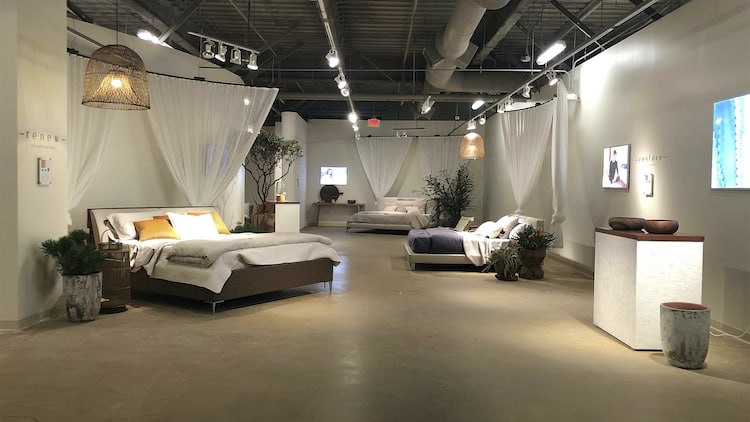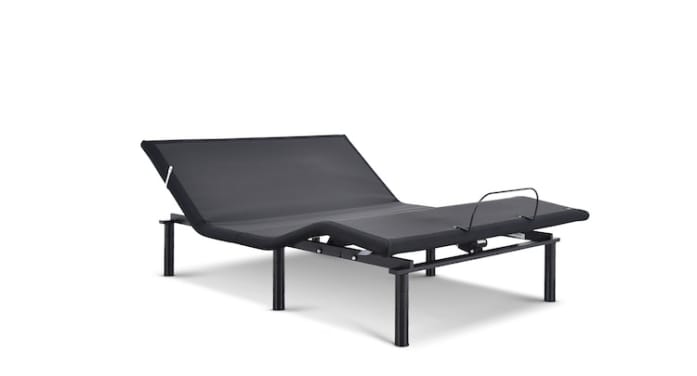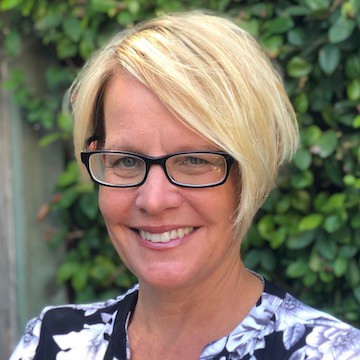Expanded production ensures product availability; easy-to-ship, feature-filled adjustable bases appeal to online shoppers who care about wellness
As the bedding industry continues to move through a period filled with unprecedented change and challenge, motion base specialist Ergomotion is taking a number of bold steps to position itself for continued growth, while also mitigating the risks of ongoing uncertainty.
For starters, by the end of this year, Ergomotion’s parent company, Keeson Technology Corp., plans to open a new production facility for the Ergomotion line in Ciudad Juarez, Mexico, to serve the United States and the rest of the Americas. The highly automated 240,000-square-foot facility will supplement Keeson’s existing factories in China and Vietnam.
“Our new plant in Mexico will shorten the lead times for orders, enabling our U.S. and other customers in North, South and Central America to get products even faster,” says Gui Peres, director of global sales for Ergomotion, which is based in Santa Barbara, California.
In January, Keeson opened a new 1.7 million-square-foot plant in its headquarters city of Jiaxing, China. It replaces the company’s previous facilities in the area, centralizing all production under one roof with updated machinery and more efficient systems.
In addition, in 2019, in the heat of the U.S. tariff battle with China, Keeson opened an another production facility in Vietnam to increase its global output. Capable of producing 480,000 adjustable bases per year, the Vietnam plant is being expanded to keep up with growing demand for the Ergomotion line in Asia.
“Our adjustable beds are distributed in markets across six continents,” says Johnny Griggs, Ergomotion’s chief operating officer. “We are a very global company, and as the trials and tribulations of this year have shown, it’s always important to have a Plan B and even a Plan C to cover the unexpected.”
A partner mindset
When the Covid-19 crisis hit the United States, Griggs says, Ergomotion was already far along the curve in terms of developing strategies for coping with the pandemic. “Our parent company is based in China, so they were in a unique position to provide valuable insight into how partners and consumers would react,” he says.
From the start, Ergomotion’s top priority was safety, Griggs says. First, the company’s management team pivoted to working remotely and virtually. Then, Ergomotion began looking for ways to help customers adapt to the difficult new business environment.
“Treating customers as partners and looking at our shared business from their perspective has been a focus of ours in a time when uncertainty is prevalent,” Griggs says. “I’ve led with optimism but with realistic plans for the future. We are working shoulder to shoulder to support them in this unusual business environment where so much is being done virtually.”
When the majority of states abruptly shut down retail activity in the spring, the hiatus — while disruptive — gave Ergomotion the opportunity to step back and assess how best to move forward. One of the first steps it took was to create new virtual training programs for its manufacturer partners and retail sales associates.

“With a devoted team and allocated resources, we have revitalized our approach to retail training by developing virtual programs that will help increase product knowledge and sales,” Griggs says. “Training is critical now more than ever. Through the virtual training program, retail sales associates are being re-engaged and armed with information needed to better sell to their customers.”
The program — led by Brendan McGagin, who joined Ergomotion in December 2019 as director of learning and development — has increased RSA engagement significantly, Griggs adds. McGagin previously was with Mattress Firm.
Working with the team at Keeson, Ergomotion was able to minimize supply disruptions for its customers as the U.S. economy began to reopen in the early summer. “Our China plant was able to reopen quickly after the extended Chinese New Year holiday and resume production,” Griggs says. “As a result, they were able to limit the supply disruptions that were impacting much of the industry and provide a steady flow of products so that we could meet demand when business picked up here.”
Creating a market
Ergomotion was founded in 2005 by Alain Clénet and his son Kelly. Having previously founded Clénet Coachworks — a designer and manufacturer of limited-edition neoclassic automobiles — Alain Clénet had a long track record of creating luxury products that combine style and function. Ergomotion quickly became one of the world’s largest manufacturers of adjustable bases.
In 2014, the Clénets sold their company to Jiaxing Shufude Electric Bed Co. Ltd., the main China-based source for the Ergomotion line owned by longtime friend and business partner Jack Tang. Shufude merged its U.S. subsidiary Softide Adjustable Beds into the Ergomotion brand, which now operates under the umbrella of Keeson, a public company traded on the Shanghai Stock Exchange. Tang is chief executive officer of Keeson.
Today, more than 4 million Ergomotion adjustable beds have been sold across more than 30 countries. The company now has offices, a distribution center and full-time staff in Europe, as well as distributors and full-time staff in every major global market.

During the past 15 years, the company has led the way in expanding demand for motion bases beyond their original roots, Griggs says. Once used primarily by patients recovering at home from major surgeries and other health setbacks, adjustable bases now are used by consumers of all ages and budgets. They have become a staple on retail floors, presented along with the mattress as part of a complete system designed to deliver sound sleep and a more comfortable way to work, read, relax or watch TV in bed.
They also have become an important profit center for retailers as attachment rates have risen steadily to a median of 22%, according to a 2019 study by financial services provider Piper Jaffray, now known as Piper Sandler Companies.
“Our adjustable beds are designed to enrich sleep, health and the overall quality of life,” Griggs says. “They’ve gone from an add-on sale at the end of a mattress purchase to an integral part of any bedding RSA’s product presentation to the consumer.”
AT A GLANCE
Company
Ergomotion
Headquarters
Santa Barbara, California. Line is produced by parent company Keeson Technology Corp. in plants in China, Vietnam and, by the end of 2020, Mexico. In the United States, products are warehoused and shipped from facilities in Arizona, California, North Carolina and Virginia.
Specialty
Adjustable bases and sleep technology solutions designed to be integrated with the world’s leading mattress brands and existing bed frames
History
Founded by Alain Clénet and his son Kelly in 2005.
Ownership
Since 2014, owned by Keeson, a Chinese
company based in Jiaxing, and publicly traded on the
Shanghai Stock Exchange
Learn more
Wellness meets tech
Going forward, the wellness aspect of Ergomotion’s line will receive an even brighter spotlight, as will technology and smart features.
“The bedroom has become a sanctuary, and the foundation of good health and wellness starts with rest,” says Sherry Chapman, head of channel development and marketing for Ergomotion.
To help retailers convey this message to consumers, Ergomotion introduced the new Wellness Retreat collection at the 2019 Summer Las Vegas Market. Wellness Retreat is a new merchandising approach that combines a full-featured adjustable base, various styles of bed frames with headboards, and integrated lifestyle elements to cater to specific customer demographics.
In its Vegas showroom, where it also held a series of interactive events, Ergomotion presented four Wellness Retreat vignettes in a spalike atmosphere with the themes of Relax, Renew, Restore and Rewind. The displays paired an adjustable base with four choices of upholstered frames and coordinating linens. Each complete setting retails from $2,800 to $3,500 in queen size.
“The collection is a reinterpretation of the adjustable base category that fuses wellness properties with smart technology and modern design,” Chapman says, adding that the base’s features include head-up, foot-up and auto-head tilt; relaxation massage; underbed lighting; sleep tracking data integration; and smart home integration with Amazon Alexa and Google Home.
While wellness benefits are positioned front and center throughout Ergomotion’s line, technology also plays an important role, Griggs adds. “We are committed to evolving the adjustable bed category by producing technology-driven products that are vital for delivering meditative mindfulness and relaxed atmospheres for sleep,” he says.
To meet this mission, the company is fast-tracking the development of new technologies. While it isn’t ready to share details, Griggs says, Ergomotion’s goal is to “create sleep systems that help consumers be healthier, sleep better and be more rejuvenated in the morning.”
A recent example of Ergomotion’s innovation is a Wi-Fi-enabled device it introduced in 2019 that allows users to operate their base with voice commands to Amazon Alexa and Google Home. The device, which works with nearly all Ergomotion bases, easily attaches underneath the base and can be sold as an aftermarket product or in conjunction with an adjustable base purchase.
The device makes the convenience of voice activation available to early adopters of adjustable bases, including consumers who purchased one of the nine adjustable beds Ergomotion created prior to the development of smart home technology.
“This product gives our users even more control over their sleep environments,” Griggs says. “As long as our device is connected to a home Wi-Fi network, it can respond to simple voice commands that will move the base to the preferred sleeping position.”
With a retail price of $79, the device also makes an attractive add-on sale for retailers and encourages return visits to the store by customers who already own an Ergomotion base, Griggs says.
Untapped opportunities
Because attachment rates for adjustable bases are “a long way from 100%,” despite the strong growth in recent years, Griggs says, “there is a huge opportunity to bring more of these systems into American homes” — not only for master bedrooms but also for kids bedrooms, guest rooms and vacation homes.
“The pandemic has made us all pay more attention to our home environments,” Griggs says. “Since we’re spending so much more time there, we’re all looking for ways to make our spaces — and our lives — more comfortable and productive.”
While the bedding business overall took a hard hit in the second quarter of the year, when the shutdowns were most prevalent, sales levels have recovered as pent-up demand was released and new demand emerged.

“The mattress business is doing well, and the adjustable base industry is steadily rebounding,” Griggs said during an August interview. He adds that demand for boxed beds has been running particularly high as consumers have moved the majority of their shopping online.
Recognizing that there’s an emerging market for lower cost, easy-to-ship adjustable bases, Ergomotion introduced Quest. The new Quest offers a range of courier-friendly, lightweight but strong foundations designed to appeal to a proactive health and wellness lifestyle. Features include 60-degree head lift; a zero standby power system, which helps keep standby power for the base at a zero level while remaining connected to Wi-Fi; built-in power outage protection; silent drive motors; and gravity release, which quickly returns the base to a flat position.
The entry-level version of this unit starts as low as $399 for queen size. The higher-end model Quest 2.5, priced at $999, adds features such as a wireless remote, head and foot articulation, a massage function, underbed lighting and Zero-G preset. The Zero-G position simulates weightlessness, putting less pressure on the body during sleep while also providing a comfortable position for watching TV or reading a book.
“The approach with the Quest product line is to create a high-velocity, low-cost item designed for mass adoption,” Griggs says. “As demand for adjustable bases has grown, the market has expanded into price points that are much more affordable. The Quest line was developed on that premise — being a sleeker, easy-to-deliver and easy-to-set-up product.”
Sold via partnerships with many of the industry’s top manufacturers and suppliers, including HSM, Serta Simmons Bedding LLC and Tempur Sealy International Inc., the Ergomotion line of products includes a wide assortment of adjustable bases from the promotional to the luxury.
“Most of our sales are through OEM partners,” Griggs says. “We have been an integral part of SSB’s adjustable bed programs since 2007 and TSI internationally since 2009. During this time, we have seen sleep technology advance tremendously.
Global growth
While Ergomotion offers promotional bases, the company is investing in research and development to escape the “race-to-the-bottom challenge that plagues so many bedding pricing structures,” Griggs says. In addition, the company is looking for growth in new channels of distribution and in new markets around the world.
“International markets will be a key part of our growth strategy for 2021 and beyond,” Peres says.
Markets outside the United States and Europe account for 15% of Ergomotion’s sales, according to Peres. The figure does not include Europe, which is managed as a separate corporate division based in Lithuania and headed by Nuno Corte Real Figueiredo.

“Our highest percentage growth globally this year has been in South Korea, which has handled the coronavirus situation very smoothly,” Peres says. Other strong markets for Ergomotion include Australia and Russia.
“Adjustable bases are increasingly growing in popularity at the premium end of the market in countries throughout the world,” Peres says. “Consumers are looking for ways to enhance their sleep and that is creating new demand for our products.”
Peres manages Ergomotion’s global sales from the company’s California headquarters. The facility also houses the company’s R&D activities. While some R&D projects have been put on the back burner because of the pandemic, the company expects that activity to increase in the near future, particularly as the new facility in Mexico opens.
“Our Mexico plant will enable us to build samples of new products much more quickly than in the past, when we were more reliant on the group in China,” Peres says.
Thinking proactively
While much of Ergomotion’s R&D activity historically has been driven by requests from its OEM partners, the company intends to be more proactive in the future.
“Our research tended just to ‘follow the mattress,’ ” Griggs says. “We’d look to our partners for insight into what they needed to support their products and focus our attention there. But now, in addition to that, we’re going to be much more enterprising in developing new ideas that lead the industry.”
Adds Chapman: “We’ll be thinking more holistically in terms of a complete sleep system and the features that consumers will need to achieve the best sleep and wellness experience possible.”
In addition to an active R&D program, Ergomotion operates a robust customer service operation to support retailers and consumers globally. Two years ago, the company boosted its customer service team by one-third and expanded its hours to a 24/7 operation.
“In an industry where customer satisfaction directly impacts customer loyalty and profitability, a 24/7 support line is simply smart business,” Griggs says. “Customer service is becoming a key driver of value generation and differentiation in an overcrowded marketplace, and that ultimately benefits the bottom line.”
As the bedding industry and the U.S. economy as a whole emerge from the pandemic, retailers and manufacturers will need to work closely together to identify the best ways to meet consumer needs. The stay-at-home mode that people have experienced may lead to permanent changes in consumer behavior, with online shopping and purchasing, and direct-to-the-door shipping playing an even bigger role in purchase decisions.
While these types of shifts will create challenges, new opportunities also are sure to emerge, Chapman says. “For example, I think we’ll see more and more baby boomers aging in place rather than moving to assisted living facilities to avoid a future pandemic-type risk,” she says. “This is already an important market, but it’s likely to get much bigger as a result of what’s happened this year.”







